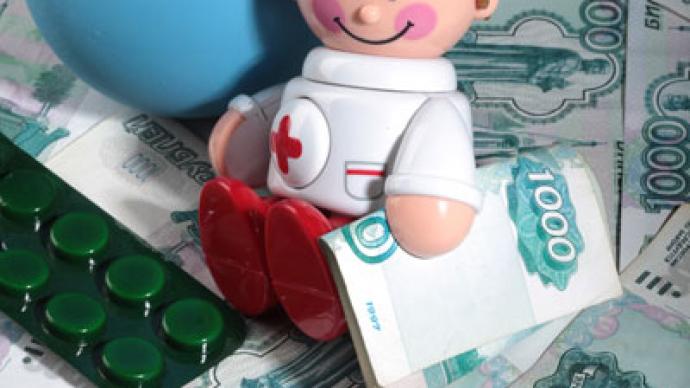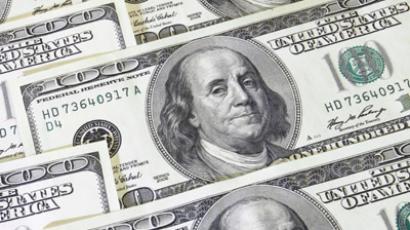Russian rouble: Is it a freefall?

The Russian rouble is losing ground against both the dollar and the euro, having hit its lowest against the greenback since 2009. Experts say it is not just investors seeking shelter in the dollar or falling oil prices pushing the rouble down.
Russia’s currency hit its record low on Friday afternoon; down to 34 roubles against the dollar. This is the lowest since July 2009, when the rate was 33.06 roubles.Some analysts say it’s primarily due to oil prices going down, coupled by uncertainty over Europe, which makes investors seek a safe haven and turn to the US dollar. But Igor Nikolaev, Director of Strategic Analysis at FBK (PKF) believes “it would be incorrect to put all the blame on cheaper black gold.”The fact the rouble is losing against the euro as well means investors think Russia has even bigger domestic problems that Europe overwhelmed by a turmoil of the moment, Nikolaev told Business RT. It’s huge social costs, like pension payments, defense, money reserved for big projects like the Sochi 2014 Olympics, for example, that the Russian Government undertook as a purely populist measure ahead of elections that turn investors away from Russia, Nikolaev added.“Foreign investors understand that having 80% of total Government expenses planned for 2012 in a form of irreducible obligations, when the second wave of the crisis could come at any moment, is very dangerous,” he explained. The WTI and Brent both are traded below $100/bbl on Friday, with WTI standing at $85/bbl and Brent – at $99.92/bbl. This compares to the average of $125/bbl Brent price in March. A 17% drop of Brent in May drove the rouble down 13%.Russia’s Central Bank has traditionally played a significant role in strengthening the national currency. In the period from January to March, the Central Bank was selling $3 billion a month. According to analysts, the regulator was absent from the market in May, which led to the fall in the currency. Sergey Shvetsov, Deputy Chairman of the Central Bank, said the regulator stopped intervening in the market as rouble volatility remained within the set comfortable range.The corridor for rouble fluctuations to the dollar now covers the range from 32.15 roubles to 38.15 roubles. If the ceiling is reached, the CB will sell $500 million for every 5 kopecks above the limit.Looking ahead, Ivan Tchakarov, Chief Economist for Russia and CIS at Renaissance Capital, expects the market “testing the upper band of the corridor the Central Bank is defending against the basket. If you assume that the dollar/euro ratio remains at the current level, this will mean that the rouble will go to somewhere of 34.5 – 35 per dollar,” he specified to Business RT.Given Russia’s economy gets around 80% of its revenues from oil and gas exports, the benefits for the remainder of 20% of Russian exporters will be minor for the whole Russian economy, Tchakarov said. Anyway, “the weakening rouble will help insulate Russia from external shocks,” which was the main reason the CB preferred to go away from targeting the rate and move closer to a free float, Tchakarov concluded.













